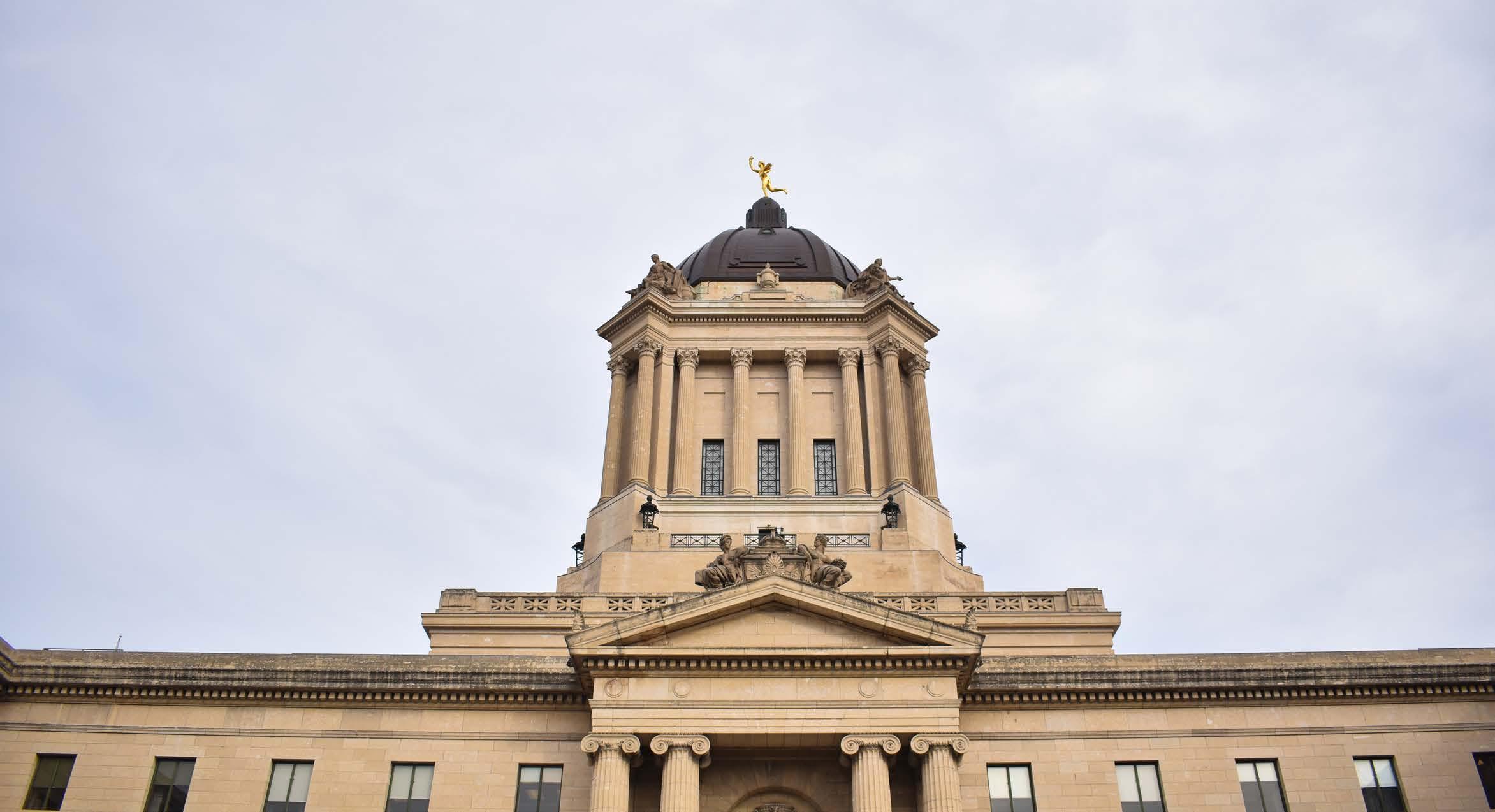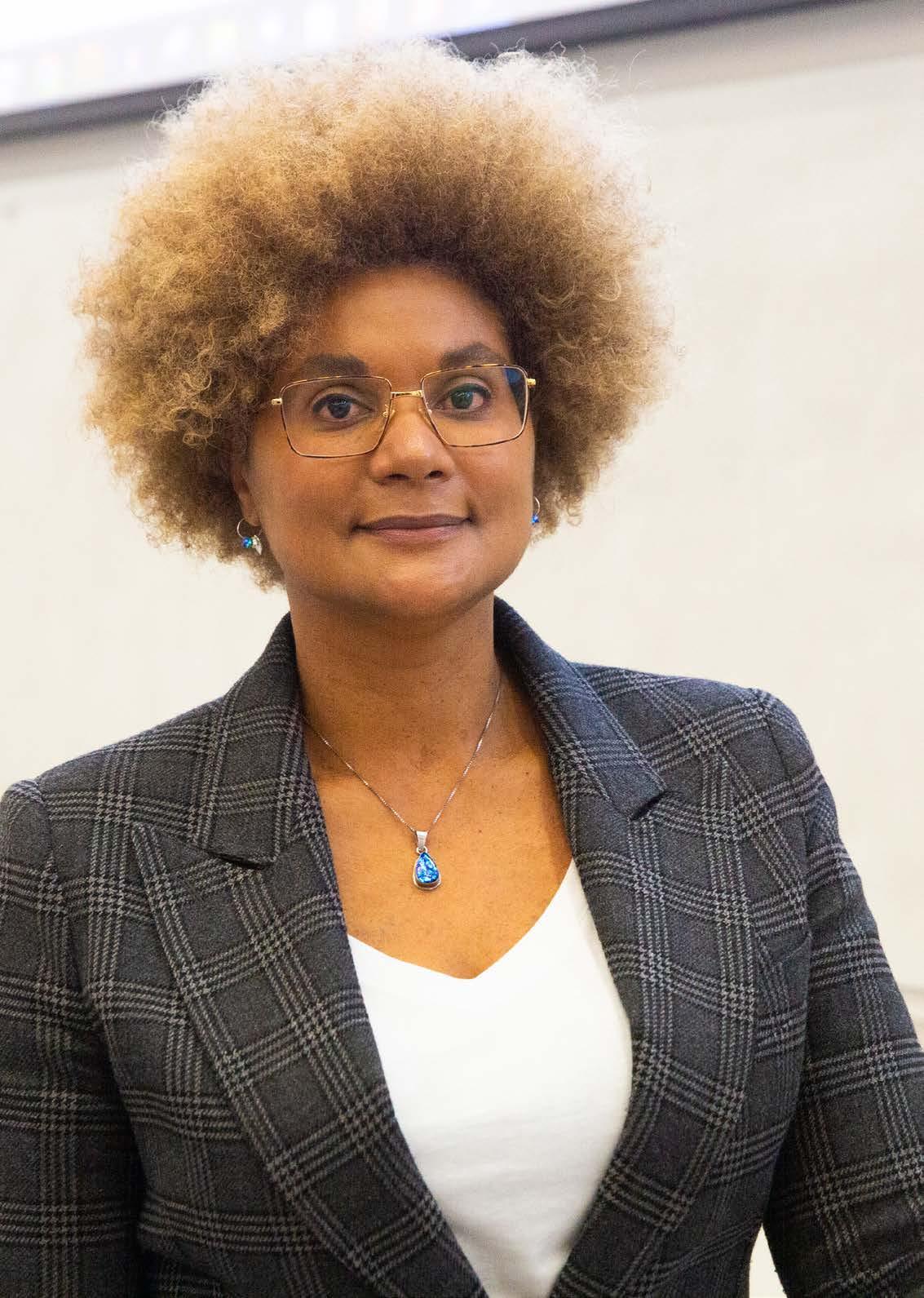
12 minute read
News
from 23 November 2022
UMSU referendum presentation at federation postponed
Presentation in Ottawa to be rescheduled virtually
Matthew Merkel, staff
federation would need to The University of Manitoba Students’ Union accept the referendum results and allow UMSU to defeder(UMSU) was unable to present ate. its recent referendum results In an email sent on Nov. at the Canadian Federation 15, Canadian Federation of of Students’ National General Students chairperson Marie Meeting in Ottawa, Ont. near Dolcetti-Koros said that the the start of the fall term break. National General Meeting had
The presentation did not “temporarily recessed, as prooccur because the conference gramming was altered durwas unexpectedly suspended ing the in-person meeting for unrelated reasons. in order to attend to various
UMSU’s referendum, which delegate needs that arose.” asked students to vote on She said that a virtual meetwhether the union should ing will be scheduled soon, at remain a member of the Can- which time UMSU would be adian Federation of Students, able to present the results of saw the UMSU-board-sup- its referendum. ported “vote no” side emerge At a Nov. 17 UMSU board victorious with just over 54 per cent of the vote.
After the referendum, UMSU president Jaron Rykiss stated that the results would be presented in Ottawa during the federation’s national conference, and was adamant that the of directors meeting, Rykiss announced that the union had brought forward an emergency motion to leave the Canadian Federation of Students. The motion was supposed to be presented at the closing session of the conference, but was not due to the session being delayed. When asked why the closing plenary was delayed, Rykiss said he had not been given a reason. “I can’t comment necessarily on why because they didn’t tell us why they cancelled it,” Rykiss said. “What we know is that it was cancelled the night of or the night before. “Our team continues to maintain that There were some issues the [Canadian Federation of Students] that went on at the conferis not adequately serving the needs of ence. I’m not going to com-
University of Manitoba students, and ment on them now,” he said. that withdrawing from this organization “I will say UMSU was not is the best course of action in service involved in the issues that had to our members” happened.” Rykiss said — Jaron Rykiss, he was told that the closUMSU president ing plenary
graphic / Jenna Solomon / staff
session would now take the form of a virtual meeting, although he stated that he did not know when it will take place or how it will work.
He added that as long as the Canadian Federation of Students still allows UMSU to present its motion at the virtual closing plenary, the motion should still be debated during the session.
“Our team continues to maintain that the [Canadian Federation of Students] is not adequately serving the needs of University of Manitoba students, and that withdrawing from this organization is the best course of action in service to our members.”
While UMSU continues its attempts to leave the Canadian Federation of Students, the union is being sued by the federation over $1 million in owed membership dues, which the federation alleges UMSU has not paid since 2018.
news@themanitoban.com

Province pauses performance-based funding plans
Proposed funding model has faced fierce opposition from post-secondary faculty
Colton McKillop, staff
The provincial government has halted plans to implement a performance-based funding model for Manitoba’s post-secondary institutions.
Last Tuesday’s throne speech did not mention the funding model, and later that day Premier Heather Stefanson told reporters that the province needed to take a step back from that approach.
Manitoba currently funds schools through annual grants, but the governing Progressive Conservatives (PC) have proposed moving toward a performance-based funding system modelled after Tennessee in recent years.
Such a model would see public funding for higher education allocated according to performance metrics such as retention and course or degree completion, although the province has offered few details on which metrics it would use, the amount of funding that would be tied to performance or what the timeline for implementation would look like.
Michael Shaw, a senior instructor in the department of biological sciences at the University of Manitoba and an executive member of the Manitoba Organization of Faculty Associations (MOFA) — an organization representing around 1600 post-secondary faculty members throughout Manitoba — is encouraged by the province’s announcement, but worries that the PCs might still try to roll out performance-based funding in the future.
“I’m very worried that they might implement this type of model, they’ve been very keen on it since it was first brought up by Brian Pallister,” he said.
He noted that Stefanson’s statements on the proposal were “nowhere near as emphatic” as her repudiation of Bill 64, a controversial education reform bill proposed under previous premier Brian Pallister.
In her comments to reporters on Tuesday, Stefanson said that although she still supports performance measures, the province was stepping back from implementing them to focus on what schools need to continue operating in the wake of challenges caused by COVID-19.
Brant Batters, press secretary for Minister of Advanced Education, Skills and Immigration Jon Reyes, told the Manitoban in an email that “our government is committed to improving Manitoba’s public post-secondary education funding to ensure students have access to affordable, high quality education while strengthening oversight of post-secondary institutions.”
“An audit by the Office of the Auditor General in 2020 recommended the province should be tracking institutional outcomes using resultsbased performance metrics.”
/ staff Faith Peters photo /

Post-secondary faculty vocally opposed
The model is no stranger to controversy. Since first brought forward, faculty associations, university presidents and student groups have been vocal in their opposition to performance-based funding.
Accord ing to Scott Forbes, president of MOFA and biology professor at the U of W, the research makes it clear performance-based funding “simply doesn’t work.”
“The whole idea is that institutions are supposed to get more efficient at churning out graduates, you churn them out better, faster, cheaper,” he said.
However, Forbes argued that university administrators instead “screen students for academic quality” to manipulate the numbers and game the system. Research on the funding model in American institutions shows that it has little to no impact on retention and graduation rates, shifts funding away from support for low-income students to scholarships for high-achievers and raises entrance standards.
“The data shows that as you introduce these systems, it reduces diversity within the student population,” Forbes explained.
“It favors the wealthy and the white, to be blunt about it, and it raises barriers for traditionally marginalized students.”
Forbes argued that this model also gives right-leaning governments “political cover” to justify cutting post-secondary funding by placing the blame on institutions for failing to meet performance standards. He described it as “a tool to defund higher education.”
“More often than not, the introduction of performance-based funding is associated with cuts to public higher education,” he said.
A decrease in public funding can shift the burden of funding universities onto students in the form of tuition increases.
Forbes said that the government formulated its plans without “a great deal of consultation” with post-secondary faculty.
The University of Winnipeg Faculty Association left partway through a virtual consultation regarding the province’s post-secondary accountability framework in June, due to frustration that their objections to performance-based funding were being ignored. MOFA representatives said that they were not invited to the meeting, and those who managed
to attend were removed. University presidents speak out The presidents of the University of Manitoba and Brandon University (BU) both sent letters to the government this year expressing their objections to the measures being proposed. University of Manitoba president Michael Benarroch wrote to the government in August following a June consultation meeting, and asked the government to “refrain from specifically tying funding to metrics” in order to avoid unintended “I’m cautiously optimistic, but I’m not c o n s e quences such going to be fully optimistic until the as reducing next provincial election has occurred” accessibility. He also — Michael Shaw, Manitoba Organization asked the province not of Faculty Association member to impose metrics based on factors outside of universities’ control, such as the employment and income of graduates. The Oct. 14 letter from BU president David Docherty explained that because the university admits any student who completes Grade 12 in order to provide education for those “who would otherwise be left out of the system,” its measurements on some academic metrics are lower than other schools. Docherty objected to the use of graduation rates as a performance metric, arguing that many who begin schooling at BU move on to other larger institutions after they choose a specialization, and that looking only at graduation rates would obscure the contributions BU made to their education.
He also stated that “as an access institution,” the school services many mature students, who may take longer to graduate as they are returning to school or learning new skills for their careers. Additionally, many Indigenous students may come to school seeking employable skills rather than a degree.
Docherty also pointed out that using post-graduate earnings as a metric ignores the many BU students who return to rural communities for work, where pay is often lower than in cities.
Research shows that performance-based funding increases financial disparities between smaller and larger institutions.
“The larger institutions with more financial capacity are able to respond more flexibly and shift resources around to work with the performance metrics,” Forbes said.
He explained that smaller universities like BU are the ones that “really suffer.”
“We know that people in the Brandon University community are concerned that if this goes ahead, Brandon University might not survive,” he said.
Shaw believes the government doesn’t “want to anger people who have been very clear” in their opposition to its plans, and has backed off for now in order to focus on issues that are more likely to help them in elections.
“I’m cautiously optimistic, but I’m not going to be fully optimistic until the next provincial election has occurred.”
Toronto professor talks unconscious biases in academia
Seminar emphasized the need for diversity and inclusion
Elah Ajene, staff
Last Tuesday, the U of M faculty of science hosted a seminar on “Recognizing and Mitigating Unconscious Bias in Academia” at its Fort Garry campus. The session featured guest speaker Maydianne Andrade, a biology professor at the University of Toronto Scarborough and president of the Canadian Black Scientists Network.
Andrade discussed the ways our biases, stereotypes and preconceptions can unconsciously have an impact on our decisions and cause us to support systems that exclude specific groups of people from academia, specifically in the sciences.
“In Canada, we’ve been talking for a long time about diversity in very vague and quiet ways, usually without any demonstration of the data,” Andrade said.
“But really, diversity is just a statistic,” she explained.
“What proportion of people do we see in our organizations from entry level through to leadership, and ideally, does that reflect the proportion of different identity groups we see on the sidewalks of our cities?”
Equity is embedded in the law in Canada and supported by legal frameworks. Educational institutions like the University of Manitoba have statements regarding their commitment to equity, inclusion and diversity.
“Despite those kinds of statements, despite our laws, it is the case that underrepresentation is common in the academy, and in every sector we look at in Canada, certain groups are underrepresented,” Andrade said.
Although there have been advances in gender equity across other disciplines, Andrade highlighted that this progress has been slower in science, technology, engineering and mathematics in comparison, and additionally, “progress has been primarily for white women, not for women of intersectional identities.”
A significant problem, which Andrade described as a “logical fallacy,” is the commonality of assuming that when women or certain racialized or cultural groups are underrepresented in a specific field, it is simply due to a lack of group interest.
“People look at patterns of representation and they slip into this mindset where that is an explanation for the underrepresentation,” she said.
These patterns of unconscious associations and biases arise toward marginalized and underrepresented groups, often leading to consistent negative outcomes.
Andrade cited an experiment with cold emails sent to graduate school professors in the United States, which showed racialized and gendered differences in response rates based on the names used
in the email, with a greater degree of bias against anyone perceived to not be a white man. The speaker also highlighted a student evaluation survey given in the early days of classes, in which female professors were considered less knowledgeable than their male counterparts despite classes having only just started. These biases reiterate an assumed lack of competence and knowledge, where oftentimes women of colour need to prove themselves again and again in academia. Andrade also noted gender differences in letters of recommendation, in which women are often described in terms of being hard-working or friendly, whereas men are often described in terms of their intellect, talent and outcomes. These gender biases result in negative effects within aca“We need everyone to be responsible for demia, and end up filterequity inclusion, it can’t just rest on the shoulders of the people from the ing people out of the system. Andrade underrepresented groups” stressed the need to — Maydianne Andrade, acknowledge and recognize president of the Canadian Black Scientists Network barriers that certain groups face due to these biases. “This is not a problem of just one group of people, this is a problem of people,” she said. “That’s why I talk to individuals,” Andrade continued. “Structures are important, but individuals can actually have a huge effect on inclusion in their local environments.” To combat these barriers, Andrade encourages individual effort and equitable intake
staff Ebunoluwa Akinbo / photo /

in academia to reverse monotypic classrooms and deficit narratives that reinforce unconscious biases.
“We need everyone to be responsible for equity inclusion, it can’t just rest on the shoulders of the people from the underrepresented groups,” she said.
Andrade emphasized that diversity is not the final objective.
“The end goal is that the people that we see in our organizations also feel that they are valued, and from a selfish perspective, that we have structures that allow us to ensure that their unique ideas and capacities are actually valued and used in the organizations to improve our outcomes,” she said.
“We will only get the benefits of diversity if people of diverse backgrounds have a seat at the table, if they’re actually being listened to, and their ideas and their innovations are being considered in our decision making.”
research@themanitoban.com






